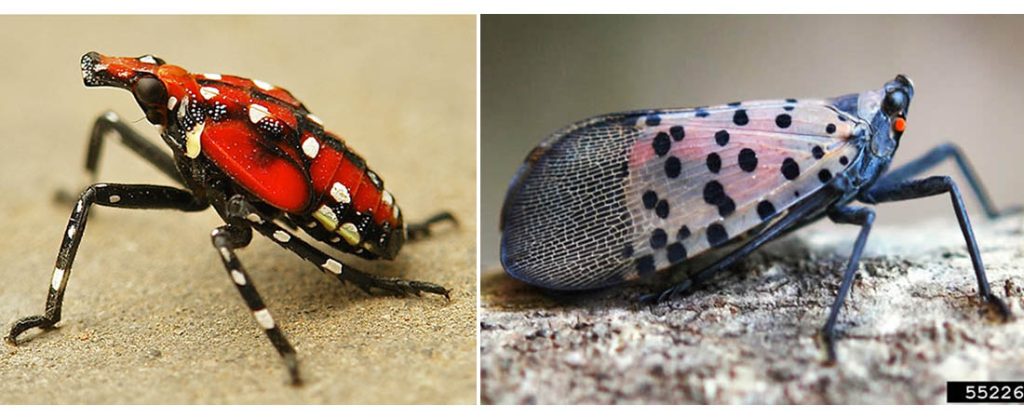
As North Carolina residents prepare to travel for the Fourth of July holiday, North Carolina Department of Agriculture and Consumer Services officials are urging them to watch out for the spotted lanternfly, an invasive insect that can damage crops and trees.
Thanks to a citizen report, the NCDA&CS’s Plant Industry Division found its first established population of spotted lanternfly last summer in Kernersville. The insect is known to feed on a variety of plants, including grapes, apples, peaches and maple trees, and has more than 100 known hosts. Spotted lanternflies secrete a sticky substance called honeydew that attracts stinging insects and causes the growth of black sooty mold on anything under the canopy of an infested tree. Spotted lanternflies are not harmful to humans or pets.
Though spotted lanterflies are capable of flight, they have moved through 14 states in eight years by human-assisted movement, which makes it important to carefully inspect your vehicle this long holiday weekend to ensure there are no hitchhikers. All life stages of the spotted lanternfly can move on vehicles and outdoor items. There are well-established populations of spotted lanternflies all along the East Coast from Massachusetts to Virginia, as well as West Virginia, Ohio, Indiana and Michigan, so travelers arriving in North Carolina from those areas should be especially vigilant.
“We have been aggressively treating and surveying an area in Forsyth County where an established population of spotted lanternfly was found last year,” said Agriculture Commissioner Steve Troxler. “We don’t want to see this spread into our state, so the more eyes watching for this pest, the better.”
Spotted lanternflies are easier to identify this time of year when they are transitioning to the adult life stage and are at their largest size and have the most identifiable markings. Visit ncagr.gov/SLF to learn how to identify the spotted lanternfly and compare them to some North Carolina look-alike insects.
If you see a spotted lanternfly, you should do the following:
-Take a photo and report the sighting on the North Carolina Department of Agriculture and Consumer Services online report tool at ncagr.gov/SLF
-Kill the insect. You can kill the insect by squishing it or placing it in a container of rubbing alcohol.
-Look for additional spotted lanternfly in the area. If your report is spotted lanternfly, you will be contacted by Plant Industry Division staff for more information.
Remember: See it. Snap it. Report it.
There are no known biological controls or native predators for spotted lanternfly, so early detection and rapid response is the only way to keep this highly invasive pest out of our state. You are the best resource to watch for invasive species and help prevent the spread of the spotted lanternfly in North Carolina.
By Joy Goforth, Plant Pest Administrator, Plant Industry Division, NCDA&CS

